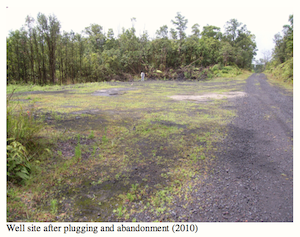Richard Ha writes:
What will happen to Big Island agriculture if we start replacing oil-fired electricity generators with geothermal electricity?
Food security involves farmers farming. If the farmers make money, the farmers will farm.
If we start using geothermal electricity, the "cold chain," the temperature control aspect of food production, will cost less. This starts with cooling at the farm and includes cooling at the wholesaler/distributor, cooling at the retail stores and cooling at the home.
Local produce will start to be closer in price to imported produce. Consumers will have more money in their pockets, so they will be able to support local agriculture.
Electricity on the Big Island has always been 25 percent more expensive than on O‘ahu. What if our electricity cost were lower, due to geothermal?
Value-added products manufactured on the Big Island would become competitive in the O‘ahu market. Having more income streams is beneficial to farmers.
Cheap, stable geothermal electricity will help local farmers make money. And, as we know, if the farmer makes money, the farmer will farm.




